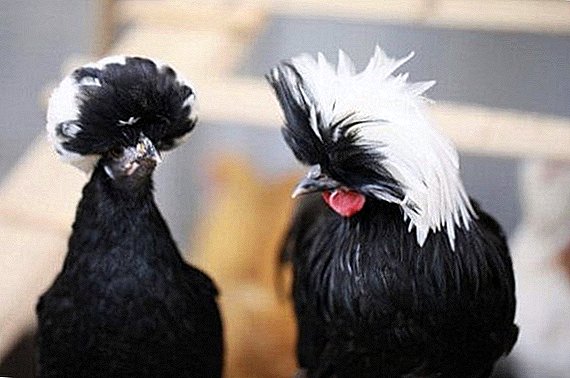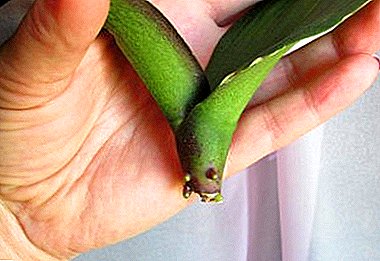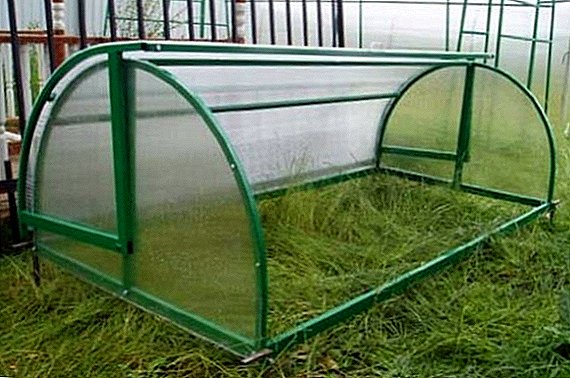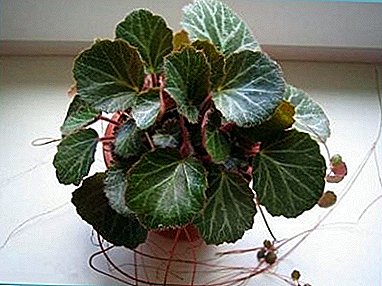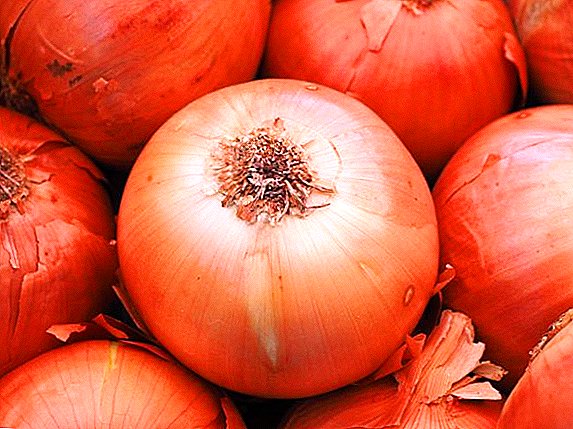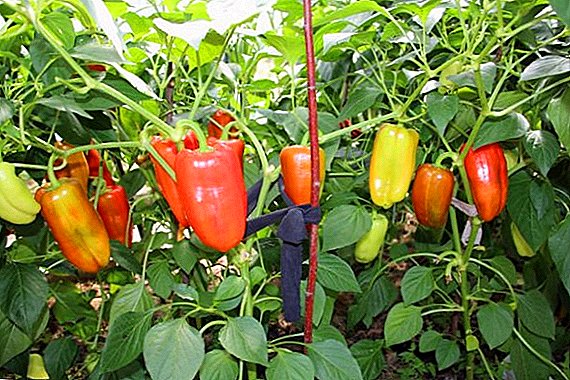 Potentilla shrub or Kuril tea is a member of the pink family. Shrub is found in the mountains of Central Asia, the Caucasus, China, in the Altai and Far East, in Siberia. Learn about the types of Kuril tea, how to grow and care, as well as its decorative use.
Potentilla shrub or Kuril tea is a member of the pink family. Shrub is found in the mountains of Central Asia, the Caucasus, China, in the Altai and Far East, in Siberia. Learn about the types of Kuril tea, how to grow and care, as well as its decorative use.
Botanical description
Kuril tea has excellent decorative qualities. A wide, branched shrub can reach a height of 20 cm to 1.5 m. Peristosyllabic leaves with 2-3 pairs of fused small oblong-shaped leaves are covered with small hairs.  Bright flowers of yellow or white color consist of five petals of rounded shape and many stamens. Since early June, flowers with a diameter of 3 cm adorn the tops of the branches. Small brown fruits appear immediately after flowering.
Bright flowers of yellow or white color consist of five petals of rounded shape and many stamens. Since early June, flowers with a diameter of 3 cm adorn the tops of the branches. Small brown fruits appear immediately after flowering.
Did you know? Kuril tea, in addition to its decorative qualities, has many useful properties and is used in traditional medicine. From it is prepared a great tonic, rich in vitamin C.
Kinds
In nature, numerous species of Potentilla shrubs are known: from high to short and grassy creeping. Breeders have brought hundreds of new varieties that differ in height, shape, shade of flowers. The most common shade is yellow, but silverweed can be with pink, orange, red and white flowers. Different types of this plant can be used in landscape design to create beautiful compositions, as green hedges and when creating alpine slides, to decorate the garden in combination with other flowers.
Find out what is good for cinquefoil white, goose, cinquefoil Indian and Potentilla Norwegian.Some varieties have a spherical shape of a bush, others are fountain-shaped, cushion-like or creeping, the size and shade of flowers also differ. In all species, one valuable quality - abundant bloom from early June to frost.
For alpine slides and rockeries, low types of silverweed are perfect:
- Altai;
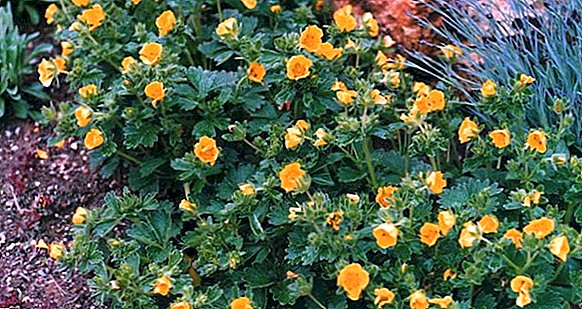
- stemless;
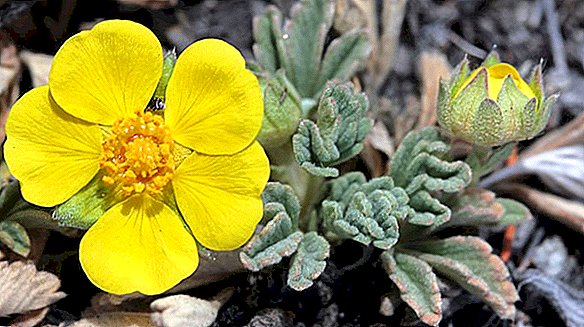
- brilliant.
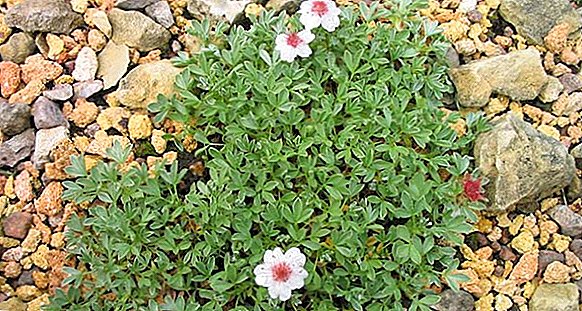
Garden and flower garden will be decorated with grassy varieties:
- Nepalese;
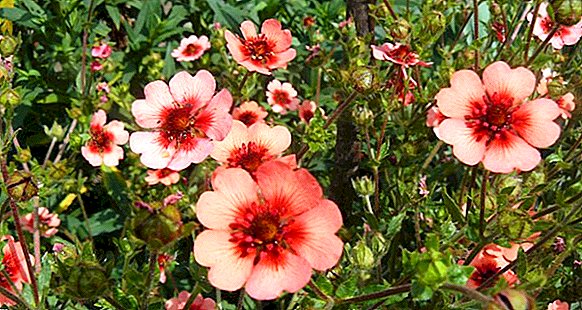
- red and bloody;
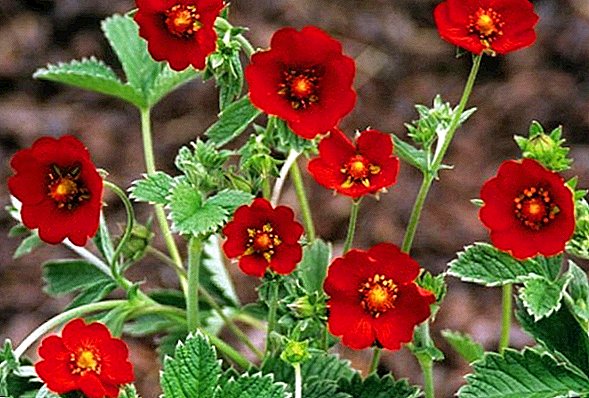
- hybrid.
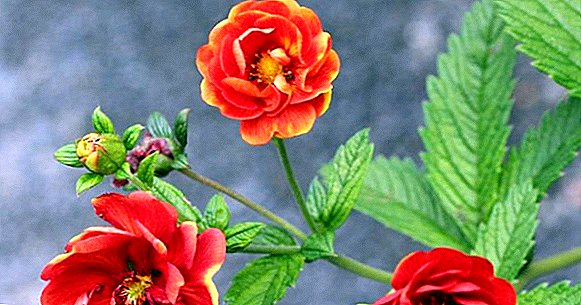
As a hedge and borders it is recommended to use high shrubs.
Breeding
Potentilla breeds in three ways:
- cuttings;
- sunflower seeds;
- root layering.
Cuttings
Propagation by cuttings is the most popular and effective method. Young flexible shoots from the upper parts of healthy and well-developed bushes are used. From the beginning of June to the middle of July, it is possible to prepare cuttings.
Important! It is impossible to use shoots with flowers for cuttings, their root system is poorly formed and diseases can develop.The length of the cuttings should be from 8 to 12 cm, they are cut with foliage. Bottom leave 1 cm to the kidney, and cut from above directly above the kidney. Then they are planted in greenhouses or greenhouses. It is necessary to provide high humidity and protection of cuttings from direct sunlight. After a fortnight, they will have a root system. New seedlings can be planted in a permanent place or left in the greenhouse until next spring.
 To accelerate the formation of the root system, it is recommended to use growth stimulants for treating cuttings before planting. You can use special chemicals or prepare a natural stimulant, dilute 40 g of sugar per 1 liter of water. Cuttings must be kept in solution for 10 hours or more, depending on the type of stimulator.
To accelerate the formation of the root system, it is recommended to use growth stimulants for treating cuttings before planting. You can use special chemicals or prepare a natural stimulant, dilute 40 g of sugar per 1 liter of water. Cuttings must be kept in solution for 10 hours or more, depending on the type of stimulator.It will be interesting to know - what you need to know for growing Potentilla shrub.In greenhouses and greenhouses, it is recommended to use a nutrient sod-leaf substrate, and on top there is a five-centimeter layer of peat or sand. In the greenhouse, the cuttings should grow to 30 cm, their root system is well developed. After this, a permanent landing is made at a distance of 25 cm from each other, so that the root collar is at ground level. The landing process is best done in cloudy weather.
Seeds
Potentilla seeds are small, they can be sown in pots or in open ground. It is necessary to dig and level the soil, sow the seeds, press them in or cover them with a thin layer of fertile soil. Water well, after 3 weeks shoots should appear, the optimum temperature in the room should not be below 18 ° C.  It is advisable to sow the seeds in the late fall. If at the beginning of spring, in order to improve their germination, they must be stratified in advance. A week after the emergence of shoots need to plant them at a distance of 30 cm from each other. After one and a half months, the seedlings can be dived to a permanent place in a loose, nutritious soil, in a well-lit place.
It is advisable to sow the seeds in the late fall. If at the beginning of spring, in order to improve their germination, they must be stratified in advance. A week after the emergence of shoots need to plant them at a distance of 30 cm from each other. After one and a half months, the seedlings can be dived to a permanent place in a loose, nutritious soil, in a well-lit place.
Root layering
It is very easy to propagate Kuril tea by root layers. It is enough in the summer to squeeze the lower young branches to the ground or press down with a stone. The place of pressing the layer to the ground must be covered with soil.
Important! To speed up the process of emergence of the root system, it is recommended to make a small incision on the shoot in the place of pressing to the ground.After two weeks, the roots should appear, and the layers will feed on their own. It must be watered and fed. It is possible to separate the layers from the main bush for the next year. It is best to plant in the spring as an independent seedling to a permanent place.
 The depth of the pit for planting should be about 0.5 m. It is recommended to make a drainage layer of pebbles 20 cm thick at the bottom of the pit. Next, you need to fill half the pit with a mixture of sand humus, leaf soil in the ratio of 2: 1: 2 and mineral fertilizer (about 150 g). Top layer fall asleep fertile soil. The seedling must be placed at a depth at which the root neck will be at ground level, it is good to water. Kuril tea can be transplanted in spring and late August.
The depth of the pit for planting should be about 0.5 m. It is recommended to make a drainage layer of pebbles 20 cm thick at the bottom of the pit. Next, you need to fill half the pit with a mixture of sand humus, leaf soil in the ratio of 2: 1: 2 and mineral fertilizer (about 150 g). Top layer fall asleep fertile soil. The seedling must be placed at a depth at which the root neck will be at ground level, it is good to water. Kuril tea can be transplanted in spring and late August.Plant Care
Kuril tea is a rather unpretentious and drought-resistant plant, but for good flowering it requires maintenance: watering, feeding, loosening the soil and pruning bushes.
Read also where Kuril tea is grown.
Watering
In the dry and hot period, it is necessary to irrigate cinquefoil 2-3 times a week. If the summer is rainy, then there is no need to water the plant. Water for irrigation must be separated and warm; very cold water harms the root system. Watering is especially important for young saplings; they will die without regular watering. Under one plant it is necessary to pour about 10 liters of water. 
Humidity
For good growth and flowering bushes, the main thing is to prevent the soil from drying out. Potentilla can be additionally sprayed in the evening to maintain the necessary moisture in hot summer.
Top dressing
The first top dressing of a plant is made during landing. A year later in spring, when the silverweed actively develops, it is recommended to apply phosphate and potassium sulfate as a solution in a solution of 10 liters of water with 30 g of fertilizers. At the beginning of flowering, you can additionally feed phosphate-potassium complex fertilizer. 
Loosening and mulching the soil
Loosening the soil should be carried out after each irrigation, this procedure promotes good growth and development of the plant. Mulching the soil with peat under the bushes allows you to retain moisture.
Pruning
Regular pruning in early spring is necessary for the violent flowering of Kuril tea. With the help of trimming the shape of the bushes is adjusted, the plant tolerates this procedure well. Bushes can be given a variety of forms. Pruning is recommended to the disclosure of the kidneys in spring or late autumn. The shoots are shortened by about a third, relieve the plant from dry and ugly branches. 
Examples of use in landscape design
Mingling is often used in landscape design. A variety of varieties, the duration of the flowering period, unpretentiousness, winter hardiness are far away all the advantages of a plant. Potentilla does not displace other plants and is a good neighbor for other crops, harmonizes well with them.
In landscape design often use such bushes as: Japanese quince, buddleya, weigela, heather, bindweed, hibiscus, hydrangea, jasmine, camellia, magnolia, lilac, spirea, forsythia and rhododendron.
 It can be used as a flowering hedge, decorate flower beds, borders or alpine slides, depending on the variety. Tall bushes are able to decorate any garden, they can be given a wide variety of forms. Potentilla goes well with different compositions of natural stones, with lavender, barberry, juniper.
It can be used as a flowering hedge, decorate flower beds, borders or alpine slides, depending on the variety. Tall bushes are able to decorate any garden, they can be given a wide variety of forms. Potentilla goes well with different compositions of natural stones, with lavender, barberry, juniper. 
Difficulties in growing
It is not difficult to cultivate cinquefoil, this plant does not require special conditions. It is recommended to choose a permanent sunny place with a loose and nutritious soil, because the life span of the bushes is more than 30 years. Potentilla with yellow flowers is more frost-resistant than with other colors. The varieties bred by breeders are afraid of severe frosts and more fastidious in their care.
Did you know? If you choose varieties with red flowers, then in an especially hot period they may not produce pigment in the right quantity and the flowers will turn a yellow shade. Do not worry, with the onset of cold nights in August, the flowers will again become bright red.
Diseases and pests
Kuril tea is sufficiently resistant to diseases and pests. The plant affects only one fungal disease - rust. With this disease, rust-like spots appear on the leaves. From this leaves spoil, which can lead to the death of the whole bush. For the treatment of used copper-soap emulsion, sulfur or other drugs that need to be treated diseased bushes. Flower growers claim that rust appears more often if coniferous crops grow in the vicinity of Potentilla.  The main pests of Kuril tea are scoops; insecticides will help to get rid of them (Fitoverm, Futanon). So, we found out that Kuril tea is able to decorate the garden and flower beds, delighting with abundant blooms all summer. This unpretentious plant-survivor does not require complex care, not afraid of the cold. Fits perfectly into the design, emphasizing the beauty of other flowers and bushes. Everyone will be able to choose for themselves the most suitable varieties and, if desired, multiply them, it is not difficult.
The main pests of Kuril tea are scoops; insecticides will help to get rid of them (Fitoverm, Futanon). So, we found out that Kuril tea is able to decorate the garden and flower beds, delighting with abundant blooms all summer. This unpretentious plant-survivor does not require complex care, not afraid of the cold. Fits perfectly into the design, emphasizing the beauty of other flowers and bushes. Everyone will be able to choose for themselves the most suitable varieties and, if desired, multiply them, it is not difficult.
Video: Lapchatka, Kuril tea
Reviews from the network










